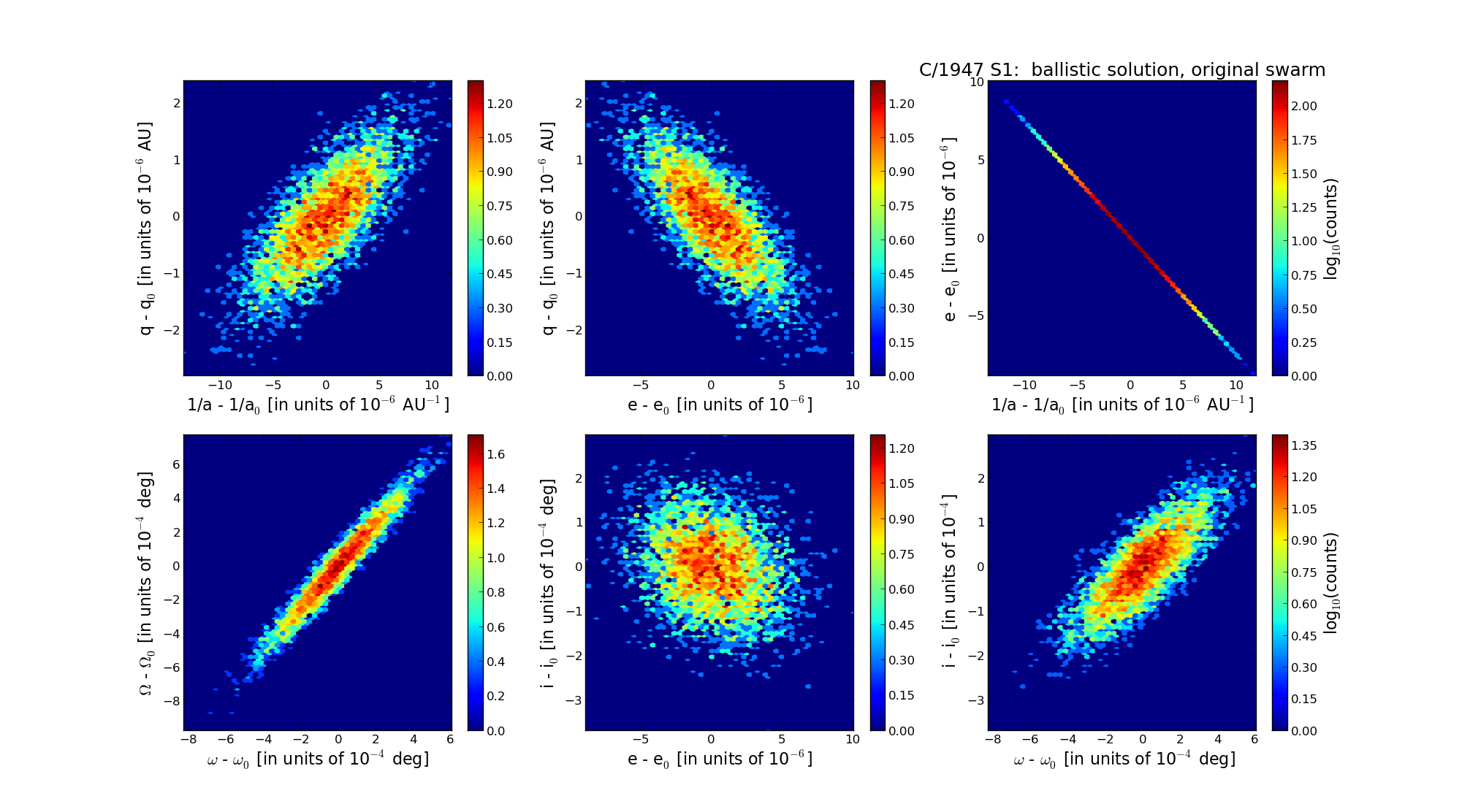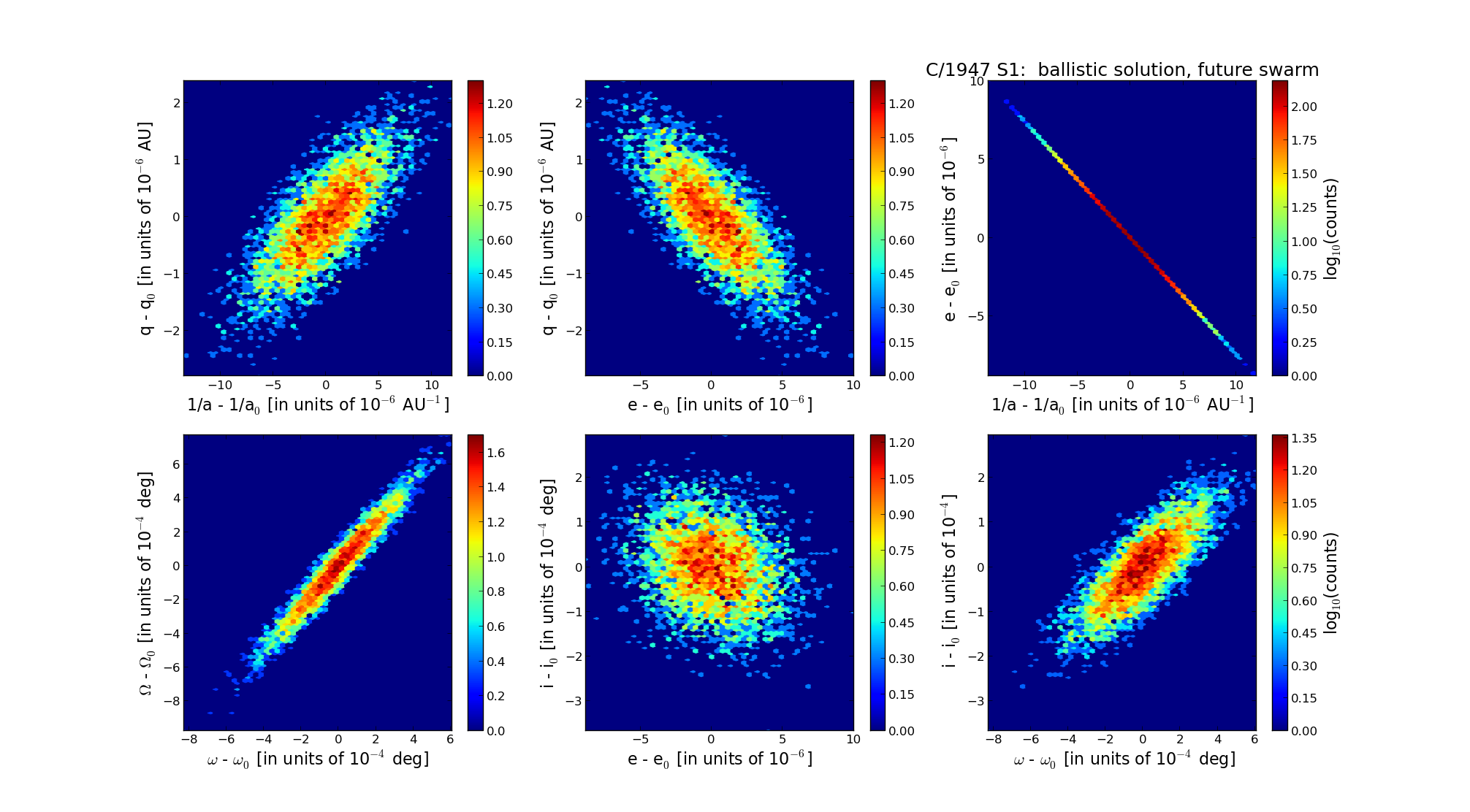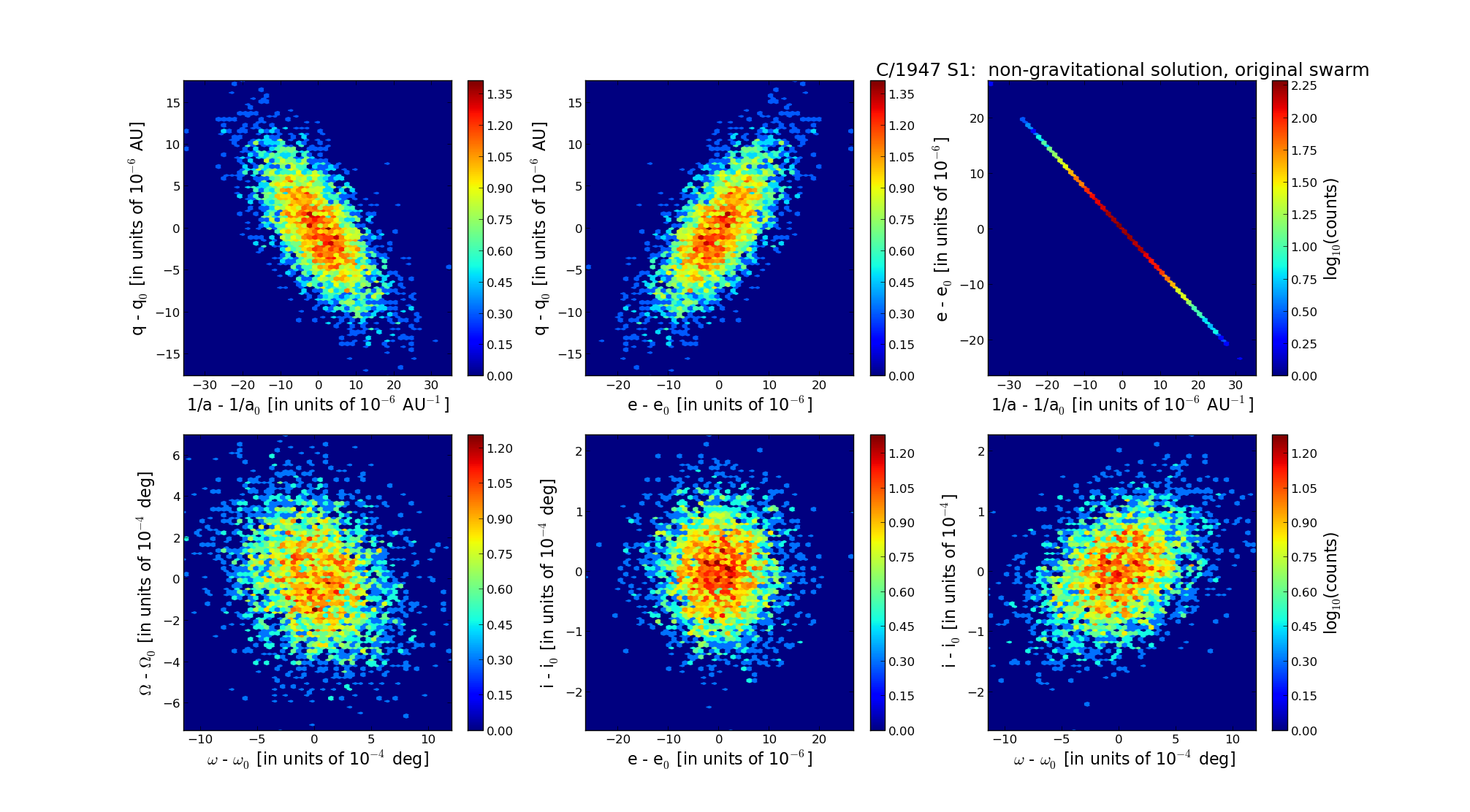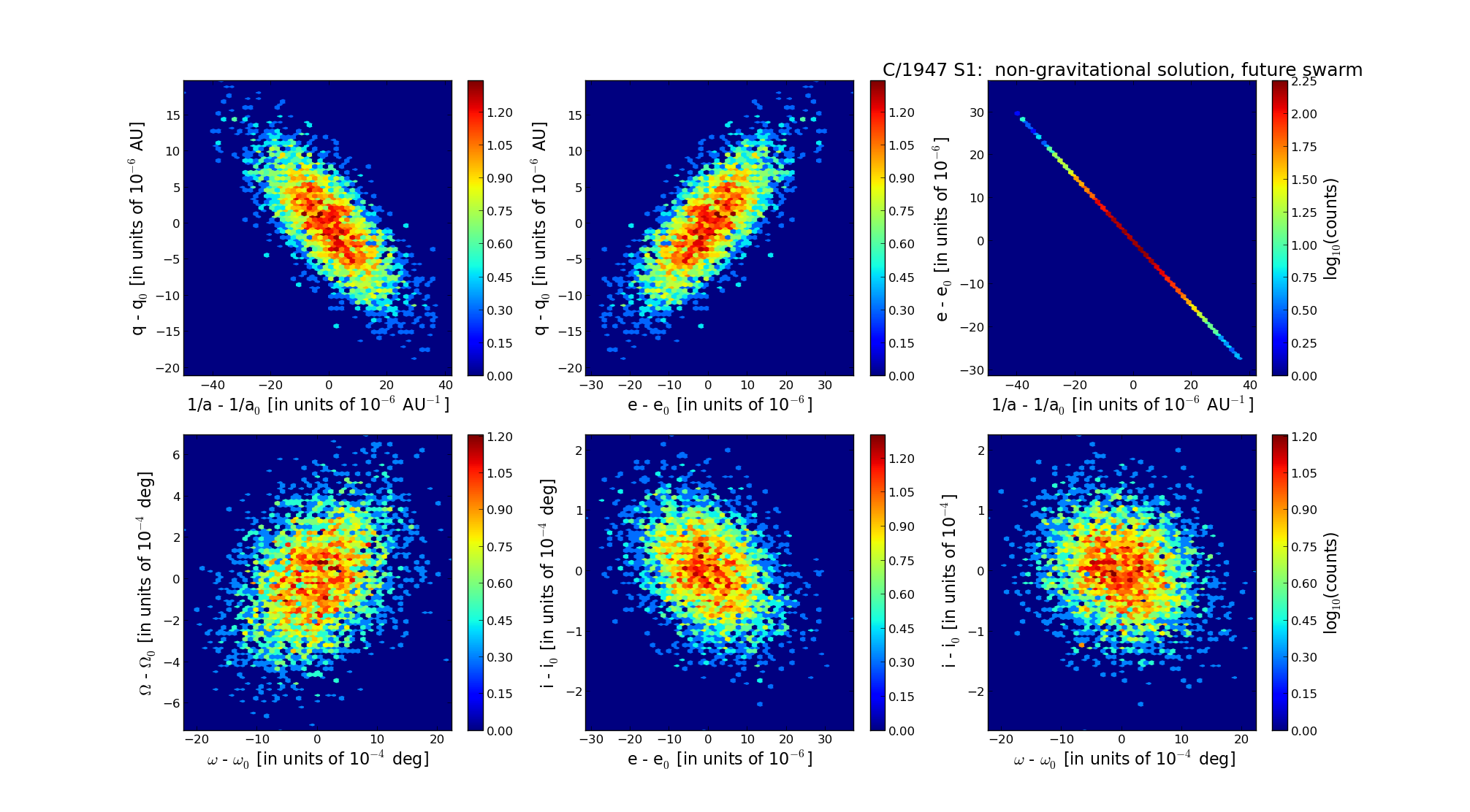| Solar System Dynamics & Planetology Group |
 |
C/1947 S1 Bester |  |
| Solar System Dynamics & Planetology Group |
 |
C/1947 S1 Bester |  |
| number of observations | 325 |
| number of residuals | 546 |
| data interval | 1947 Sep. 28 — 1949 Feb. 6 |
| rms [arcsec] | 2.59 |
| orbit quality class | 1a |
| Epoch (TT) | 19480219.0 | = JD 2432600.5 |
| time of perihelion passage (TT) | 19480216.423429 | ± 0.000066 |
| perihelion distance | 0.74812370 | ± 0.00000075 |
| eccentricity | 1.00035570 | ± 0.00000258 |
| argument of perihelion [deg] | 350.214858 | ± 0.000179 |
| longitude of the ascending node [deg] | 271.439960 | ± 0.000229 |
| inclination [deg] | 140.568349 | ± 0.000078 |
| inverse semimajor axis [10-6 au-1] | -475.46 | ± 3.45 |

| Epoch (TT) | 16500111 | |
| time of perihelion passage (TT) | 19480217.010780 | ± 0.000061 |
| perihelion distance | 0.74919707 | ± 0.00000076 |
| eccentricity | 0.99997502 | ± 0.00000259 |
| argument of perihelion [deg] | 350.249194 | ± 0.000181 |
| longitude of the ascending node [deg] | 271.413569 | ± 0.000231 |
| inclination [deg] | 140.601343 | ± 0.000079 |
| inverse semimajor axis [10-6 au-1] | 33.34 | ± 3.46 |

| Epoch (TT) | 22411219 | |
| time of perihelion passage (TT) | 19480216.805182 | ± 0.000086 |
| perihelion distance | 0.74487969 | ± 0.00000076 |
| eccentricity | 1.00026541 | ± 0.00000258 |
| argument of perihelion [deg] | 350.247822 | ± 0.000181 |
| longitude of the ascending node [deg] | 271.579999 | ± 0.000231 |
| inclination [deg] | 140.472078 | ± 0.000079 |
| inverse semimajor axis [10-6 au-1] | -356.31 | ± 3.46 |
| number of observations | 325 |
| number of residuals | 543 |
| data interval | 1947 Sep. 28 — 1949 Feb. 6 |
| rms [arcsec] | 2.42 |
| orbit quality class | 1b |
| Epoch (TT) | 19480219.0 | = JD 2432600.5 |
| time of perihelion passage (TT) | 19480216.422309 | ± 0.000138 |
| perihelion distance | 0.74810617 | ± 0.00000196 |
| eccentricity | 1.00023485 | ± 0.00001240 |
| argument of perihelion [deg] | 350.213385 | ± 0.000206 |
| longitude of the ascending node [deg] | 271.439361 | ± 0.000208 |
| inclination [deg] | 140.568516 | ± 0.000062 |
| inverse semimajor axis [10-6 au-1] | -313.92 | ± 16.58 |
| Nongravitational parameters [10-8 au/day2] | A1 = 2.055 ± 0.207 | A2 = -0.2341 ± 0.0649 | A3 = 0.0 (assumed) |

| Epoch (TT) | 16491023 | |
| time of perihelion passage (TT) | 19480217.009294 | ± 0.000304 |
| perihelion distance | 0.74915527 | ± 0.00000502 |
| eccentricity | 0.99996030 | ± 0.00000614 |
| argument of perihelion [deg] | 350.251157 | ± 0.000340 |
| longitude of the ascending node [deg] | 271.412966 | ± 0.000207 |
| inclination [deg] | 140.601506 | ± 0.000062 |
| inverse semimajor axis [10-6 au-1] | 52.99 | ± 8.19 |

| Epoch (TT) | 22420925 | |
| time of perihelion passage (TT) | 19480216.803521 | ± 0.000310 |
| perihelion distance | 0.74482539 | ± 0.00000549 |
| eccentricity | 1.00020675 | ± 0.00000870 |
| argument of perihelion [deg] | 350.241846 | ± 0.000620 |
| longitude of the ascending node [deg] | 271.579407 | ± 0.000206 |
| inclination [deg] | 140.472235 | ± 0.000061 |
| inverse semimajor axis [10-6 au-1] | -277.59 | ± 11.68 |